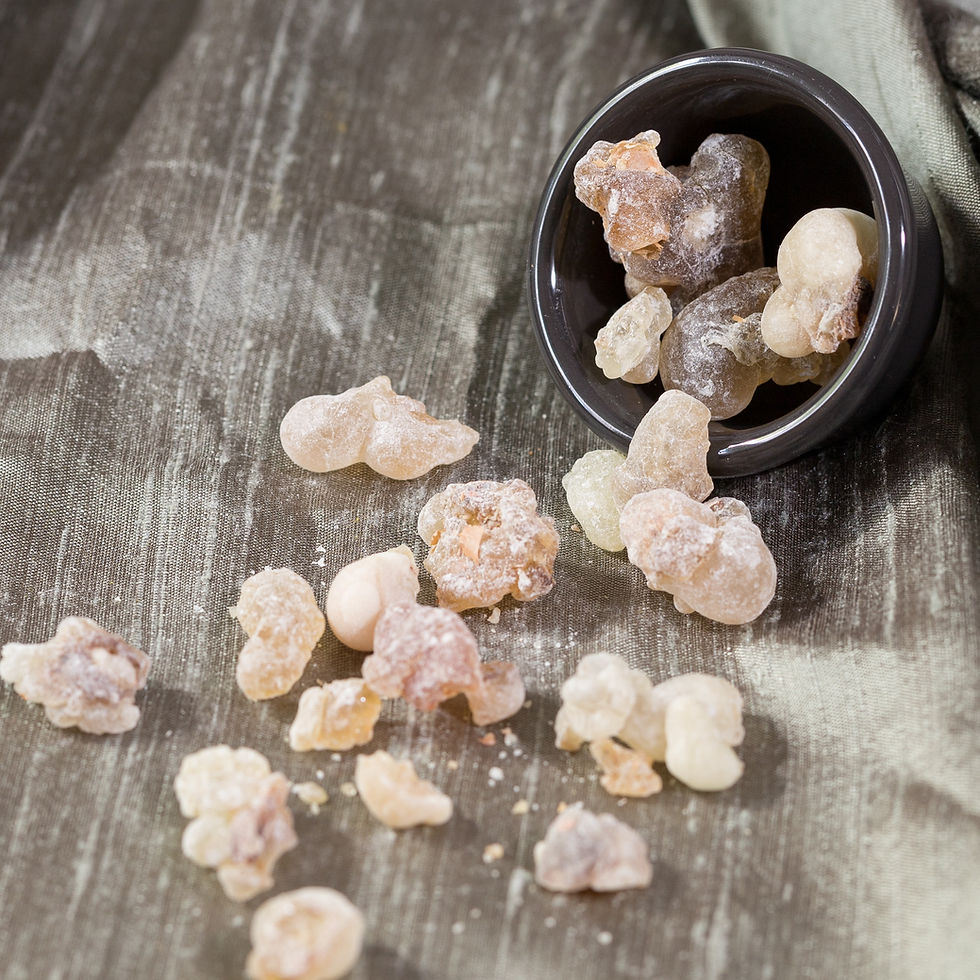The Rise and Fall of Oakmoss in Perfumery
- Scent Evolution

- Apr 11, 2024
- 2 min read

Oakmoss (latin Evernia prunastri) is a species of lichen (symbiotic organisms composed of algal and fungal cells) commonly found in mountainous terrains and forests throughout the northern hemisphere. It grows on trunks and branches of oak trees, as well as other conifers like fir and pine. So why is this particular species of lichen so important?
Oakmoss has been used throughout history. Ancient Egyptians likely used it in their mummification rituals as traces of oakmoss have been found in graves dating back to 1900 BC. Today, oakmoss essential oils are studied because of their potential health benefits, antimicrobial, antioxidant, and anti-inflammatory properties. Still, this small lichen is likely the most well-known because of its majestic aromatic properties that enabled the birth of whole fragrance families that captured the hearts of fragrance enthusiasts around the world. For decades oakmos has been commercially harvested in South and Central Europe where its fragrant compounds are extracted to create the oakmoss absolute. This material is often used as a base note and fixative and is the key component of the Fougère and Chypre perfume families. Oakmoss has a very complex woody, green, sharp, and slightly sweet scent.
But, in 2017. the European Commission banned the use of three molecules in perfumery — atranaol and chloroatranol , both found in oakmoss, as well as one synthetic molecule (HICC) reminiscent of lily of the valley. Ban was introduced based on concerns that these molecules could cause skin rashes in 1-3 % of consumers. In the following years, the International Fragrance Association (IFRA), the industry’s self-regulatory body, banned many other compounds and introduced additional rules, regulations, and purity specifications. This led to a series of (more or less successful) reformulations of many fragrances on the market today.
atranaol (left) and chloroatranaol (right)
Initially, perfumers needed to find combinations of other ingredients to recreate the smell of oakmoss or use synthetic substitutes. Luckily, scientists and chemists working for large compounding agencies have found a way to create a clean oakmoss absolute, with allergenic molecules removed, or more accurately reduced to less than 100 ppm (parts per million), which is below the IFRA limit. That way even natural oakmoss can and is being used in perfumery today without breaking the new rule!

Our absolute favorite oakmoss dominant fragrance is the one and only Mousse Illuminee from Rogue Perfumery. This perfume house is a small independent USA-based fragrance house. Brand owner and perfumer, Manuel Cross, makes beautiful vintage-inspired fragrances, that enabled the brand to gain a very passionate and dedicated fan base (which we are part of!). Mousse Illuminee is green, sweet, and very loud! It screams spring and creates a pleasant green, soap-like, elegant aura around anyone who wears it. It's a must-try and will make you fall in love with oakmoss.







Comments